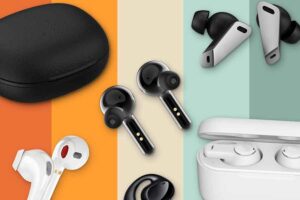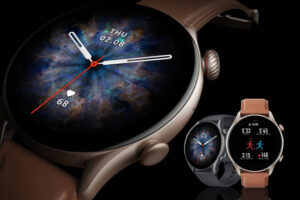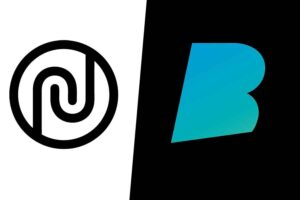Call it the beginning of golden era for Indian players engaged in the business of offering wearables (including hearables too)! While the Indian market reported yet another record quarter by selling 23.8 million units in Q3 2021 with watches registering 4.3 million shipments, three homegrown brands – Noise, BoAt and Fire-Boltt – captured more than two-thirds of the watch market, as per a recent report. Their aggressive offerings at affordable prices, innovations and marketing spends on digital platforms are a lesson for other domestic companies to make their presence felt.
The global wearable market, and the technology in particular, has undergone remarkable phases including meteoric hype, funding worth billions of dollars, innumerable new patents and launching of thousands of products. While the international market has certainly witnessed ripples, the real waves have been created of late in the Indian wearable space. According to the recent India Monthly Wearable Device Tracker by the International Data Corporation, the Indian market reported yet another record quarter by selling 23.8 million units in Q3 2021, with watches registering 4.3 million shipments. Overall, wristwear (inclusive of watches and wristbands) crossed the 5 million shipments mark in a single quarter, further reinforcing the acceptance of watches in the country.
Indians on top
According to the IDC as well as Counterpoint Research report, three homegrown brands – Noise, BoAt and Fire-Boltt – have captured more than two-thirds of the watch market. The maximum though has been registered by just one among the three, i.e. Fire-Boltt, which clocked a 394% QoQ growth and increased its market share from 5.5% to 15-17% within one quarter. Talking about the factors that are driving this surge, company’s co-founder Arnav Kishore said that affordability and diversity of offerings played a very decisive role in this regard.
Also Read: The 5G Craze: How Consumers Are Looking For A Smartphone Beyond Cameras
“The two key factors driving the market are affordability and tech-powered diversity of offerings. In the last quarter, we expanded our Bluetooth calling range and introduced an innovative Amoled series, which comprises the first ever smartwatch with LTPS retina display. In fact, the Counterpoint Research report categorically mentions that our seven consecutive launches during the third quarter of 2021, along with the roping in of Virat Kohli as our brand ambassador, contributed to our increase in the market share. As we expect a similar market trend to continue, we have already launched our AI smartwatch with Bluetooth calling and voice assistants. Every offering you make in the market should give the consumer something fresh because the market is ultra-competitive,” said Kishore.
This year has been very remarkable for Noise, which as per IDC, was the only homegrown brand leading in the wearable watch category for the past six quarters. “Despite the challenges brought by the pandemic, we have witnessed tremendous growth in 2021 with more people opting for smart wearables. One of the core reasons behind customers’ trust is that we curate and design devices in line with their needs and demands. We are offering them a technology-forward lifestyle gadget,” said Amit Khatri, Co-founder, Noise.
“Our core business objective is to look at innovation as a priority and if you look at our product line-ups and development, we have always made sure that has happened with each product. This year, we have also announced some of our key products like ColorFit Ultra (the path-breaking mightiest screen and display), X-Fit (in association with HRX), Brio (the lightest and the slimmest watch), and ColorFit Pro 3 Assist (with built-in Alexa). We are geared up for the next year’s line-up that will be equally compelling, innovative, and futuristic,” Khatri further added.
Similarly, boAt, owned by Imagine Marketing, has carved a niche as a cool multi-platform wearable brand. The company has tied up with a clutch of celebrities, including Kiara Advani and Diljit Dosanjh, to promote its brand. “We talk to consumers in a language they understand. Millennials are very impatient, and if we don’t evolve with them, then we are dead,” said Aman Gupta, co-founder and chief marketing officer, in a recent interview with Mint.
Reasons galore
One of India’s pioneering mobile and lifestyle accessories brands, Molife, which has seen the market evolution over the past 16 years, also recently forayed into the wearable segment with the launch of two state-of-the-art and affordable smartwatches. According to Molife Managing Director Deepesh Gupta, “The consumers are on the lookout for the right combination of features, price and quality. There is hardly any new Indian who does not like the idea of sporting a stylish and slim smartwatch rather than a traditional timepiece. The increased health related concerns in the wake of the pandemic has also impacted the consumer preference for a device that could keep them updated in real time about their key health metrics. We cannot also ignore the ease a smartwatch brings in our daily life.”
However, a few other stakeholders opine that it isn’t affordability or health metrics, but innovation that holds the key to the historic evolution in the market over the past few quarters. When asked about the role of innovation and whether or not the Indian brands have the mettle to continue this trend for a long time, Indian consumer technology brand Crossbeats Co-founder Abhinav Agarwal said that it is currently like “a race against time” for the Indian brands that currently appear to dominate the market.
Also Read: Cloud Gaming: 5G to Bring About a Paradigm Shift
“Indian brands are in a race against time, considering the cut-throat competition. There is a strong need for innovation in every bit we produce, be it the audibles or even the smart gadgets. Innovation and design are the only key factors that would determine the fate of the business and decide how well a brand will be able to survive the storm and for how long! Looking at the current market figures, consumer technology is a trend that will never go out of business, no matter what,” said Agarwal.
Talking about the growth in the watch segment, Anisha Dumbre, Market Analyst, Client Devices, IDC India, said, “While seasonality made 3Q21 the biggest quarter for wearables, the influx of devices at the entry-level was the key growth factor. Throughout the quarter, Indian vendors were aggressive with their launches and channel expansion. Aggressive intent to maintain their lead helped them to further reduce the average selling price of watches to $73, putting immense pressure on a struggling wrist band category.”
“So far, these new-age brands have been able to limit the incumbent smartphone brands’ ability to make any dent in their growth and continue to dominate the hearables and wristwear categories,” added Dumbre on the foray of smartphone companies in the wearables segment.
Echoing Dumbre’s words, Anshika Jain, Senior Research Analyst at Counterpoint, said that this is the highest contribution from the Indian players so far. “The strategy of celebrity endorsements, introductory pricing schemes, discount offers, affordable and feature-rich devices and increasing the frequency of new launches has worked well for the Indian brands,” said Jain.
Interestingly, there is a steep decline in the average selling price of a smartwatch, as it has almost halved from the level a year back. “More than 90% of the market now falls under INR 10,000 with INR 2,500-INR 3,000 being the most competitive segment and contributing to around 40% of the overall market. With new launches coming at even lower prices, the market under INR 2,000 is expected to witness higher growth in the coming months,” said Harshit Rastogi, Research Associate at Counterpoint.
Hearables already a hit
In addition to the record high in the demand for wearables, especially smartwatches, the IDC report also mentions about Truly Wireless or TWS devices reaching a 39.5% share of earwear in the third quarter of the year. India has seen the emergence of small or peripheral brands like Boult Audio, MiVi, Ptron, Truke among others grabbing the attention of consumers like never before.
Arnav Mutneja, Director at Quantum Hi-Tech – a three-decade old Indian consumer and lifestyle tech brand that recently forayed into the TWS segment, is of the opinion that this new technology is revolutionary and the demand for it is most likely to reach record high in the audio segment.
“There have been significant advancements in the TWS segment, including the likes of earbuds with switchable ANC modes and hybrid ANC technology. If we observe the pattern in the demand surge and the buyer behaviour, we would find that the headphone sales have nosedived by almost 50% and the maximum share of the same has been taken by TWS. As we consistently re-strategize our offerings on a need-based proposition, we recently launched a state-of-the-art TWS that is powered with smart and easy touch control options and voice assistants, which assume utmost significance in the wake of the new normal. Considering the technological advancements in the space, it is very crucial to align the offerings in sync with the demand as well as the need in the market,” he said.
Also Read: Are Smartwatches the Future of Calling?
Achin Gupta, Country Head-India at French lifestyle brand Zoook, resonated the thought citing the IDC report. He said, “Often when we talk about wearable, we misconstrue it to comprise only smartwatches, bands etc, but earwear category is a very significant chunk of the segment. It consists of TWS, neckbands and wireless over the ear headphones. The IDC report suggests that the shipment of TWS devices in the earwear category grew by more than 70% in the last quarter. We expect the demand for TWS earphones to further multiply in the near future. With people inclining more toward personalized devices with cutting-edge technology, TWS will continue to gain momentum even in 2022.”
Gadget for mankind
While the explosion of new players in the mass market segment has given rise to competition, putting a lot of pressure on brands to distinguish in a market that is getting flooded with mirror image products, one thing for sure that it’s the beginning of a new era of IoT (Internet of Things) in India where wearables have a significant role to play. Jacob Jin, Director of South Asia, Amazfit, has very rightly said, “The reality of life in the 21st century is that we wake up to technology, drive with technology, work with it and come home to watch it, and with the advent of technology the smartwatches are offering many things that we couldn’t even envision besides timekeeping.”
“Smartwatches are pioneering it all from making phone calls to monitoring PAI (Personal Activity Intelligence). People find it more suitable to retrieve information from their wrist rather than tie up both hands with their smartphones. The smartwatch is the gadget for mankind,” he concluded.
“Affordability has been one of the primary reasons for Indian brands to emerge strongly”
Anisha Dumbre, Market Analyst, Client Devices, IDC India
How do you look at the emergence of Indian brands in the wearable category, especially in 2021?
The year 2020 saw a surge in the number of Indian brands entering the wearable market and the trend continues in 2021. Within a short period, these Indian brands had made their mark in the category, capturing a sizable portion of the overall market share. According to the IDC Monthly Wearable Device Tracker, Oct data release, Indian brands account for 59% of the market in YTD 2021(*Jan-Oct’21), up from 41% in 2020. BoAt has been leading the earwear segment, capturing nearly half of the earwear market, whereas three of the top three companies in the wearable watch category are Indian brands. Together, these brands collectively held a share of 64% (nearly 2/3rd of the market) in 2021Q3.
What factors are driving this surge and giving a tough competition to the foreign players including smartphone brands offering their own wearables?
Indian brands have largely displaced most of the brands in this category. In just a few quarters, these brands have been successful to build a recognizable name in the market. Affordability has been one of the primary reasons for these brands to emerge strongly in the category. For instance, these brands were quick to identify the price gap between a fitness band and a smartwatch and launched wearables at affordable price points. Additionally, these brands have been spending heavily on marketing and promotions across online and offline platforms. These brands are also at the forefront of onboarding celebrities for endorsements that help them to connect instantly with the audience. Thirdly, these brands are quick to incorporate consumer feedback into their devices to expand their portfolio rapidly.
How do you look at this development from the innovation point of view?
Indian brands have been at the forefront of identifying rapidly changing consumer needs and adapting devices to meet those needs. Furthermore, Indian brands are quick to introduce new devices with new features and designs to the market at affordable price. For example, in the wearable watch category, Fire-Boltt expanded its product portfolio to 15 SKUs with new features and new designs in just 5 quarters. Recently, Noise partnered with proprietary Bragi to enable its devices with Bragi’s proprietary OS.
Do Indian brands have the mettle to continue this trend for a long time? How do you look at their prospects in 2022?
The wearable category is constantly evolving. However, the coming year is very critical for vendors as every player wants to expand and grow and capture a significant share in the market. Indian brands are constantly exploring new channels to expand their presence, materializing new collaborations, and adding new product categories to expand their business in India. They have evolved in terms of technology and products and have an edge over other brands in the market. However, they lack R&D and the ability to scale their business. Nonetheless, the competition is also building their capabilities around these areas. Hence, it seems that their dominance will sustain for some more years before we see the emergence of strong IoT brands that develop in-house capabilities for better hardware and software and can scale products at entry-level price points.
Noise partners TWS innovator Bragi, promises exclusive products
Homegrown connected lifestyle brand Noise has entered into an exclusive partnership with Bragi, the inventor and largest intellectual property owner of true wireless headphones. It is Bragi’s first partnership with an Indian originated brand. Under this partnership, Noise will exclusively work with Bragi to launch an intelligent range of audio devices powered by the proprietary Bragi OS in India. The products will be collaboratively designed by both the teams. First of its range is expected to be launched in the first half of 2022. Noise has signed a long-term partnership with Bragi to infuse smart hearable devices in India. With this, the Noisemakers will be able to leverage the next generation of features in TWS – never seen before in India. This partnership is in line with Noise’ vision to introduce more intelligent products and continue to innovate for the Indian market.
Also Read: 48 and Above: The New Megapixel Trend













